A Novel Electrochemiluminescence Immunosensor Based on Resonance Energy Transfer between g-CN and NU-1000(Zr) for Ultrasensitive Detection of Ochratoxin A in Coffee
Abstract
:1. Introduction
2. Materials and Methods
2.1. Chemical Reagents and Apparatus
2.2. Carboxylation and Activation of g-CN
2.3. The Preparation of NU-1000(Zr) and OTA-Apt-NU-1000(Zr)
2.4. Expression, Purification, and Identification of Nb28-C4bpα Fusion Proteins
2.5. Fabrication Process of ECL-RET Immunosensor between g-CN and NU-1000(Zr)
3. Results
3.1. Characterizations of g-CN and NU-1000(Zr)
3.2. Expression, Purification, and Identification of Nb28-C4bpα
3.3. Feasibility Analysis of RET between g-CN and NU-1000(Zr)
3.4. Electrochemical and ECL Behaviors of the ECL-RET Immunosensor
3.5. Optimization of Experimental Conditions
3.6. OTA Detection Performance of ECL-RET Immunosensor
3.7. Selectivity, Stability, and Reproducibility of the ECL Immunosensor
3.8. Spiked Sample Analysis
4. Conclusions
Author Contributions
Funding
Data Availability Statement
Conflicts of Interest
References
- Gallo, A.; Ferrara, M.; Perrone, G. Recent advances on the molecular aspects of ochratoxin A biosynthesis. Curr. Opin. Food Sci. 2017, 17, 49–56. [Google Scholar] [CrossRef]
- Khoi, C.S.; Chen, J.H.; Lin, T.Y.; Chiang, C.K.; Hung, K.Y. Ochratoxin A-induced nephrotoxicity: Up-to-date evidence. Int. J. Mol. Sci. 2021, 22, 11237. [Google Scholar] [CrossRef]
- Wang, L.; Hua, X.; Shi, J.; Jing, N.H.; Ji, T.; Lv, B.; Liu, L.J.; Chen, Y. Ochratoxin A: Occurrence and recent advances in detoxification. Toxicon 2022, 210, 11–18. [Google Scholar] [CrossRef] [PubMed]
- Kunene, K.; Weber, M.; Sabela, M.; Voiry, D.; Kanchi, S.; Bisetty, K.; Bechelany, M. Highly-efficient electrochemical label-free immunosensor for the detection of ochratoxin A in coffee samples. Sens. Actuators B 2020, 305, 127438. [Google Scholar] [CrossRef]
- Lv, L.R.; Wang, X.Y. Recent advances in ochratoxin A electrochemical biosensors: Recognition elements, sensitization technologies, and their applications. J. Agric. Food Chem. 2020, 68, 4769–4787. [Google Scholar] [CrossRef] [PubMed]
- Coronel, M.B.; Marin, S.; Cano, G.; Ramos, A.J.; Sanchis, V. Ochratoxin A in Spanish retail ground roasted coffee: Occurrence and assessment of the exposure in Catalonia. Food Control 2011, 22, 414–419. [Google Scholar] [CrossRef]
- Li, L.Z.; Liu, X.; He, S.J.; Cao, H.M.; Su, B.C.; Huang, T.Z.; Chen, Q.; Liu, M.H.; Yang, D.P. Electrochemiluminescence immunosensor based on nanobody and Au/CaCO3 synthesized using waste eggshells for ultrasensitive detection of ochratoxin A. ACS Omega 2021, 6, 30148–30156. [Google Scholar] [CrossRef] [PubMed]
- Ahmed, N.E.; Farag, M.M.; Soliman, K.M.; Abdel-Samed, A.K.M.; Naguib, K.M. Evaluation of methods used to determine ochratoxin A in coffee beans. J. Agric. Food Chem. 2007, 55, 9576–9580. [Google Scholar] [CrossRef] [PubMed]
- Oh, H.K.; Joung, H.A.; Jung, M.; Lee, H.; Kim, M.G. Rapid and simple detection of ochratoxin A using fluorescence resonance energy transfer on lateral flow immunoassay (FRET-LFI). Toxins 2019, 11, 292. [Google Scholar] [CrossRef]
- Fujii, S.; Ono, E.Y.S.; Ribeiro, R.M.R.; Assunção, F.G.A.; Takabayashi, C.R.; de Oliveira, T.C.R.M.; Itano, E.N.; Ueno, Y.; Kawamura, O.; Hirooka, E.Y. A comparison between enzyme immunoassay and HPLC for ochratoxin A detection in green, roasted and instant coffee. Braz. Arch. Biol. Technol. 2007, 50, 349–359. [Google Scholar] [CrossRef]
- Bao, K.L.; Liu, X.; Xu, Q.; Su, B.C.; Liu, Z.L.; Cao, H.M.; Chen, Q. Nanobody multimerization strategy to enhance the sensitivity of competitive ELISA for detection of ochratoxin A in coffee samples. Food Control 2021, 127, 108167. [Google Scholar] [CrossRef]
- Wu, B.N.; Hu, C.Y.; Hu, X.Q.; Cao, H.M.; Huang, C.S.; Shen, H.B.; Jia, N.Q. Sensitive ECL immunosensor for detection of retinol-binding protein based on double-assisted signal amplification strategy of multiwalled carbon nanotubes and Ru(bpy)32+ doped mesoporous silica nanospheres. Biosens. Bioelectron. 2013, 50, 300–304. [Google Scholar] [CrossRef] [PubMed]
- Khataee, A.; Sohrabi, H.; Arbabzadeh, O.; Khaaki, P.; Majidi, M.R. Frontiers in conventional and nanomaterials based electrochemical sensing and biosensing approaches for Ochratoxin A analysis in foodstuffs: A review. Food Chem. Toxicol. 2021, 149, 112030. [Google Scholar] [CrossRef]
- Ni, J.; Yang, W.Q.; Wang, Q.X.; Luo, F.; Guo, L.H.; Qiu, B.; Lin, Z.Y.; Yang, H.H. Homogeneous and label-free electrochemiluminescence aptasensor based on the difference of electrostatic interaction and exonuclease-assisted target recycling amplification. Biosens. Bioelectron. 2018, 105, 182–187. [Google Scholar] [CrossRef]
- Xiong, C.Y.; Liang, W.B.; Zheng, Y.N.; Zhuo, Y.; Chai, Y.Q.; Yuan, R. Ultrasensitive assay for telomerase activity via self-Enhanced electrochemiluminescent ruthenium complex doped metal-organic frameworks with high emission efficiency. Anal. Chem. 2017, 89, 3222–3227. [Google Scholar] [CrossRef] [PubMed]
- Huang, Q.Q.; Luo, F.; Lin, C.Y.; Wang, J.; Qiu, B.; Lin, Z.Y. Electrochemiluminescence biosensor for thrombin detection based on metal organic framework with electrochemiluminescence indicator embedded in the framework. Biosens. Bioelectron. 2021, 189, 113374. [Google Scholar] [CrossRef] [PubMed]
- Huang, B.M.; Yao, C.W.; Zhang, Y.J.; Lu, X.Q. A novel label-free solid-state electrochemiluminescence sensor based on the resonance energy transfer from Ru(bpy)32+ to GO for DNA hybridization detection. Talanta 2020, 218, 121126. [Google Scholar] [CrossRef]
- Yu, Y.C.; Lu, C.; Zhang, M.N. Gold nanoclusters@Ru(bpy)32+-layered double hydroxide ultrathin film as a cathodic electrochemiluminescence resonance energy transfer probe. Anal. Chem. 2015, 87, 8026–8032. [Google Scholar] [CrossRef]
- Wei, M.; Wang, C.L.; Xu, E.S.; Chen, J.; Xu, X.L.; Wei, W.; Liu, S.Q. A simple and sensitive electrochemiluminescence aptasensor for determination of ochratoxin A based on a nicking endonuclease-powered DNA walking machine. Food Chem. 2019, 282, 141–146. [Google Scholar] [CrossRef]
- Gao, J.W.; Chen, Z.Y.; Mao, L.B.; Zhang, W.; Wen, W.; Zhang, X.H.; Wang, S.F. Electrochemiluminescent aptasensor based on resonance energy transfer system between CdTe quantum dots and cyanine dyes for the sensitive detection of Ochratoxin A. Talanta 2019, 199, 178–183. [Google Scholar] [CrossRef]
- Fang, J.L.; Li, J.S.; Feng, R.Q.; Zhao, L.; Zhang, N.U.; Zhao, G.H.; Yue, Q.; Wei, Q.; Cao, W. Dual-quenching electrochemiluminescence system based on novel acceptor CoOOH@Au NPs for early detection of procalcitonin. Sens. Actuators B 2021, 332, 129544. [Google Scholar] [CrossRef]
- Luo, Q.X.; Li, Y.; Liang, R.P.; Cao, S.P.; Jin, H.J.; Qiu, J.D. Gold nanoclusters enhanced electrochemiluminescence of g-C3N4 for protein kinase activity analysis and inhibition. J. Electroanal. Chem. 2020, 856, 113706. [Google Scholar] [CrossRef]
- Qin, D.M.; Meng, S.; Wu, Y.S.; Mo, G.C.; Jiang, X.H.; Deng, B.Y. Design of a dual-wavelength ratiometric electrochemiluminescence immunosensor for sensitive detection of amyloid-b protein in human serum. ACS Sustain. Chem. Eng. 2021, 9, 7541–7549. [Google Scholar] [CrossRef]
- Li, M.S.; Wang, C.X.; Liu, D.F. A novel “off-on” electrochemiluminescence sensor based on highly efficient resonance energy transfer in C-g-C3N4/CuO nanocomposite. Anal. Chim. Acta 2020, 1138, 30–37. [Google Scholar] [CrossRef] [PubMed]
- Hu, W.C.; Pang, J.; Biswas, S.; Wang, K.; Wang, C.; Xia, X.H. Ultrasensitive detection of bacteria using a 2D MOF nanozyme-amplified electrochemical detector. Anal. Chem. 2021, 93, 8544–8552. [Google Scholar] [CrossRef]
- Zhao, B.L.; Luo, Y.L.; Qu, X.D.; Hu, Q.; Zou, J.H.; He, Y.; Liu, Z.B.; Zhang, Y.W.; Bao, Y.W.; Wang, W.; et al. Graphite-like carbon nitride nanotube for electrochemiluminescence featuring high efficiency, high stability, and ultrasensitive ion detection capability. J. Phys. Chem. Lett. 2021, 12, 11191–11198. [Google Scholar] [CrossRef] [PubMed]
- Chen, L.C.; Zeng, X.T.; Si, P.; Chen, Y.M.; Chi, T.E.; Kim, D.H.; Chen, G.N. Gold nanoparticle-graphite-like C3N4 nanosheet nanohybrids used for electrochemiluminescent immunosensor. Anal. Chem. 2014, 86, 4188–4195. [Google Scholar] [CrossRef]
- Cheng, W.W.; Tang, X.Z.; Zhang, Y.; Wu, D.; Yang, W.J. Applications of metal-organic framework (MOF)-based sensors for food safety: Enhancing mechanisms and recent advances. Trends Food Sci. Technol. 2021, 112, 268–282. [Google Scholar] [CrossRef]
- Su, B.C.; Xu, H.; Xie, G.F.; Chen, Q.; Sun, Z.C.; Cao, H.M.; Liu, X. Generation of a nanobody-alkaline phosphatase fusion and its application in an enzyme cascade-amplified immunoassay for colorimetric detection of alpha fetoprotein in human serum. Spectrochim. Acta Part A Mol. Biomol. Spectrosc. 2021, 262, 120088. [Google Scholar] [CrossRef] [PubMed]
- Li, Z.F.; Wang, Y.; Vasylieva, N.; Wan, D.B.; Yin, Z.H.; Dong, J.X.; Hammock, B.D. An ultrasensitive bioluminescent enzyme immunoassay based on nanobody/nanoluciferase heptamer fusion for the detection of tetrabromobisphenol A in Sediment. Anal. Chem. 2020, 92, 10083–10090. [Google Scholar] [CrossRef]
- Li, X.J.; Zhang, X.Y.; Ma, H.M.; Wu, D.; Zhang, Y.; Du, B.; Wei, Q. Cathodic electrochemiluminescence immunosensor based on nanocomposites of semiconductor carboxylated g-C3N4 and graphene for the ultrasensitive detection of squamous cell carcinoma antigen. Biosens. Bioelectron. 2014, 55, 330–336. [Google Scholar] [CrossRef]
- Park, J.; Jiang, Q.; Feng, D.W.; Mao, L.Q.; Zhou, H.C. Size-controlled synthesis of porphyrinic metal-organic framework and functionalization for targeted photodynamic therapy. J. Am. Chem. Soc. 2016, 138, 3518–3525. [Google Scholar] [CrossRef] [PubMed]
- Li, P.; Klet, R.C.; Moon, S.Y.; Wang, T.C.; Deria, P.; Peters, A.W.; Klahr, B.M.; Park, H.J.; Al-Juaid, S.S.; Hupp, J.T.; et al. Synthesis of nanocrystals of Zr-based metal-organic frameworks with csq-net: Significant enhancement in the degradation of a nerve agent simulant. Chem. Commun. 2015, 51, 10925–10928. [Google Scholar] [CrossRef] [PubMed]
- Wang, Y.F.; Zhang, Y.; Sha, H.F.; Xiong, X.; Jia, N.Q. Design and biosensing of a ratiometric electrochemiluminescence design and biosensing of a ratiometric electrochemiluminescence resonance energy transfer aptasensor between a g-C3N4 nanosheet and Ru@MOF for amyloid-b protein. ACS Appl. Mater. Interfaces 2019, 11, 36299–36306. [Google Scholar] [CrossRef] [PubMed]
- Fu, X.L.; Hou, F.; Liu, F.R.; Ren, S.W.; Cao, J.T.; Liu, Y.M. Electrochemiluminescence energy resonance transfer in 2D/2D heterostructured g-C3N4/MnO2 for glutathione detection. Biosens. Bioelectron. 2019, 129, 72–78. [Google Scholar] [CrossRef]
- Song, C.; Li, X.J.; Hu, L.H.; Shi, T.F.; Wu, D.; Ma, H.M.; Zhang, Y.; Fan, D.W.; Wei, Q.; Ju, H.X. Quench-type electrochemiluminescence immunosensor based on resonance energy transfer from carbon nanotubes and Au-nanoparticles-enhanced g-C3N4 to CuO@polydopamine for procalcitonin detection. ACS Appl. Mater. Interfaces 2020, 12, 8006–8015. [Google Scholar] [CrossRef]
- Fang, J.L.; Zhao, G.H.; Dong, X.; Li, X.; Miao, J.C.; Wei, Q.; Cao, W. Ultrasensitive electrochemiluminescence immunosensor for the detection of amyloid-β proteins based on resonance energy transfer between g-C3N4 and Pd NPs coated NH2-MIL-53. Biosens. Bioelectron. 2019, 142, 111517. [Google Scholar] [CrossRef] [PubMed]
- Jia, M.X.; Jia, B.Y.; Liao, X.F.; Shi, L.C.; Zhang, Z.; Liu, M.; Zhou, L.D.; Li, D.H.; Kong, W.J. A CdSe@CdS quantum dots based electrochemiluminescence aptasensor for sensitive detection of ochratoxin A. Chemosphere 2022, 287, 131994. [Google Scholar] [CrossRef] [PubMed]
- Lu, L.X.; Yuan, W.; Xiong, Q.; Wang, M.H.; Liu, Y.J.; Cao, M.; Xiong, X.H. One-step grain pretreatment for ochratoxin A detection based on bipolar electrode-electrochemiluminescence biosensor. Anal. Chim. Acta 2021, 1141, 83–90. [Google Scholar] [CrossRef]
- Lin, Y.; Wang, J.; Luo, F.; Guo, L.H.; Qiu, B.; Lin, Z.Y. Highly reproducible ratiometric aptasensor based on the ratio of amplified electrochemiluminescence signal and stable internal reference electrochemical signal. Electrochim. Acta 2018, 283, 798–805. [Google Scholar] [CrossRef]
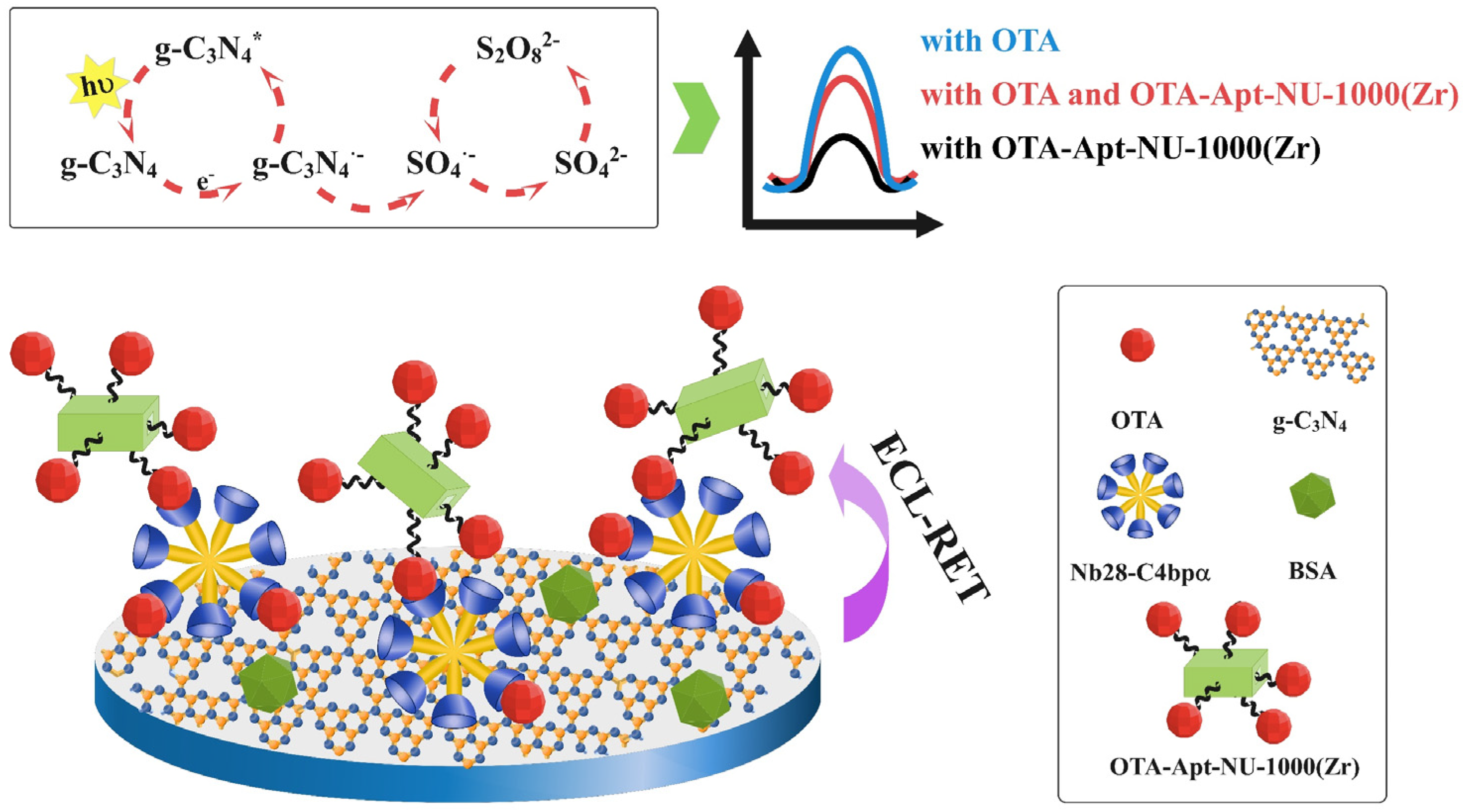
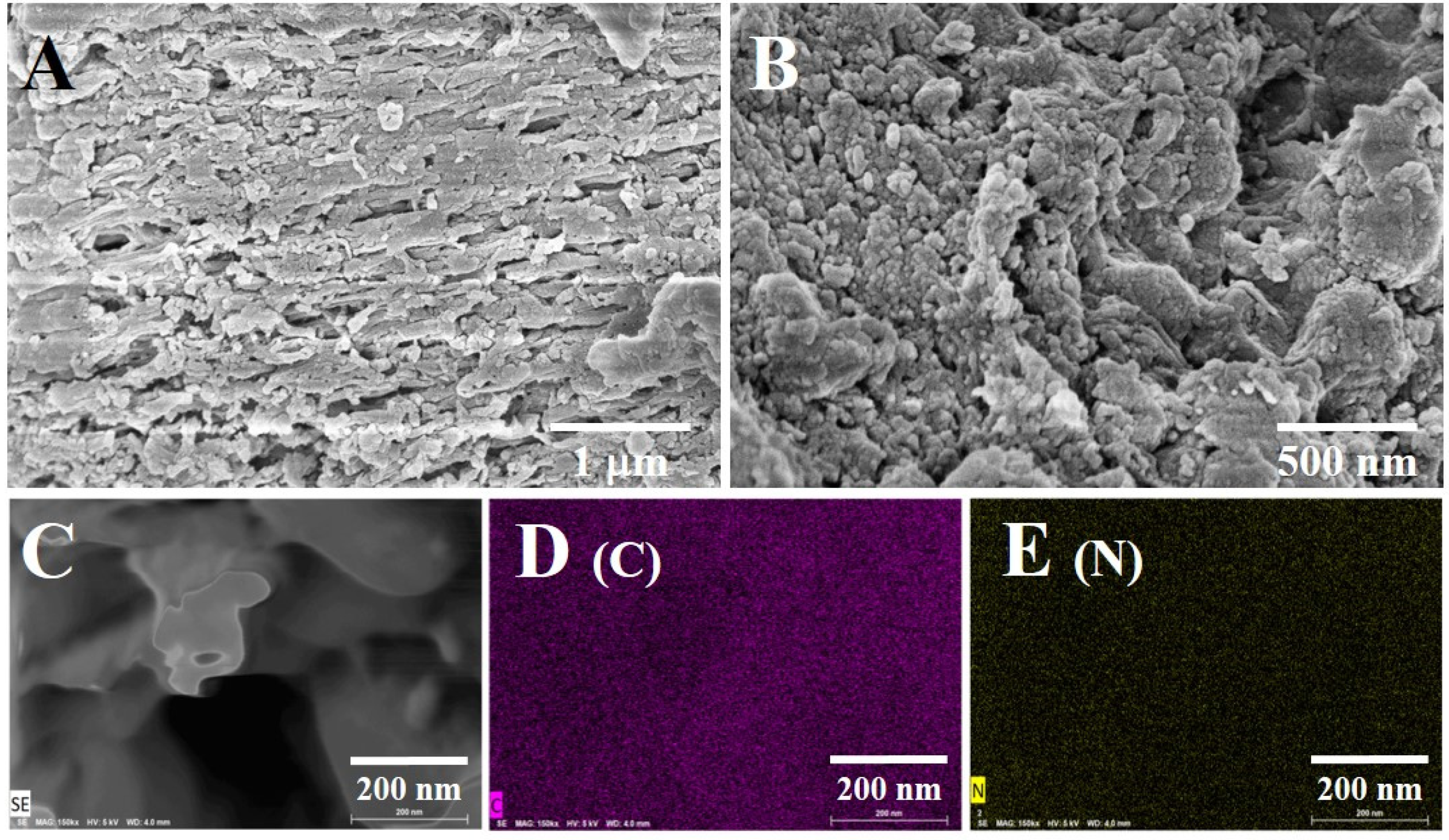
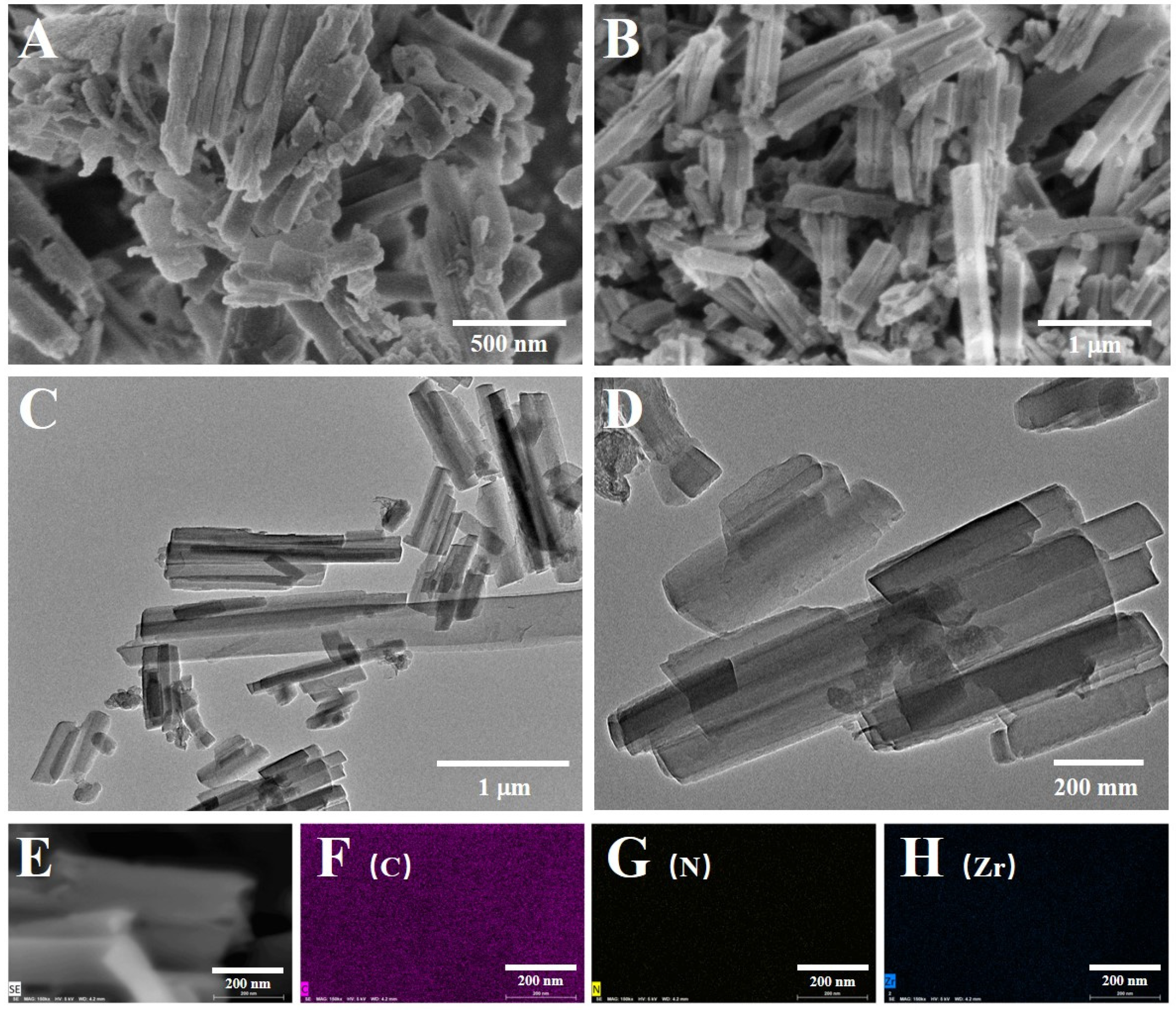
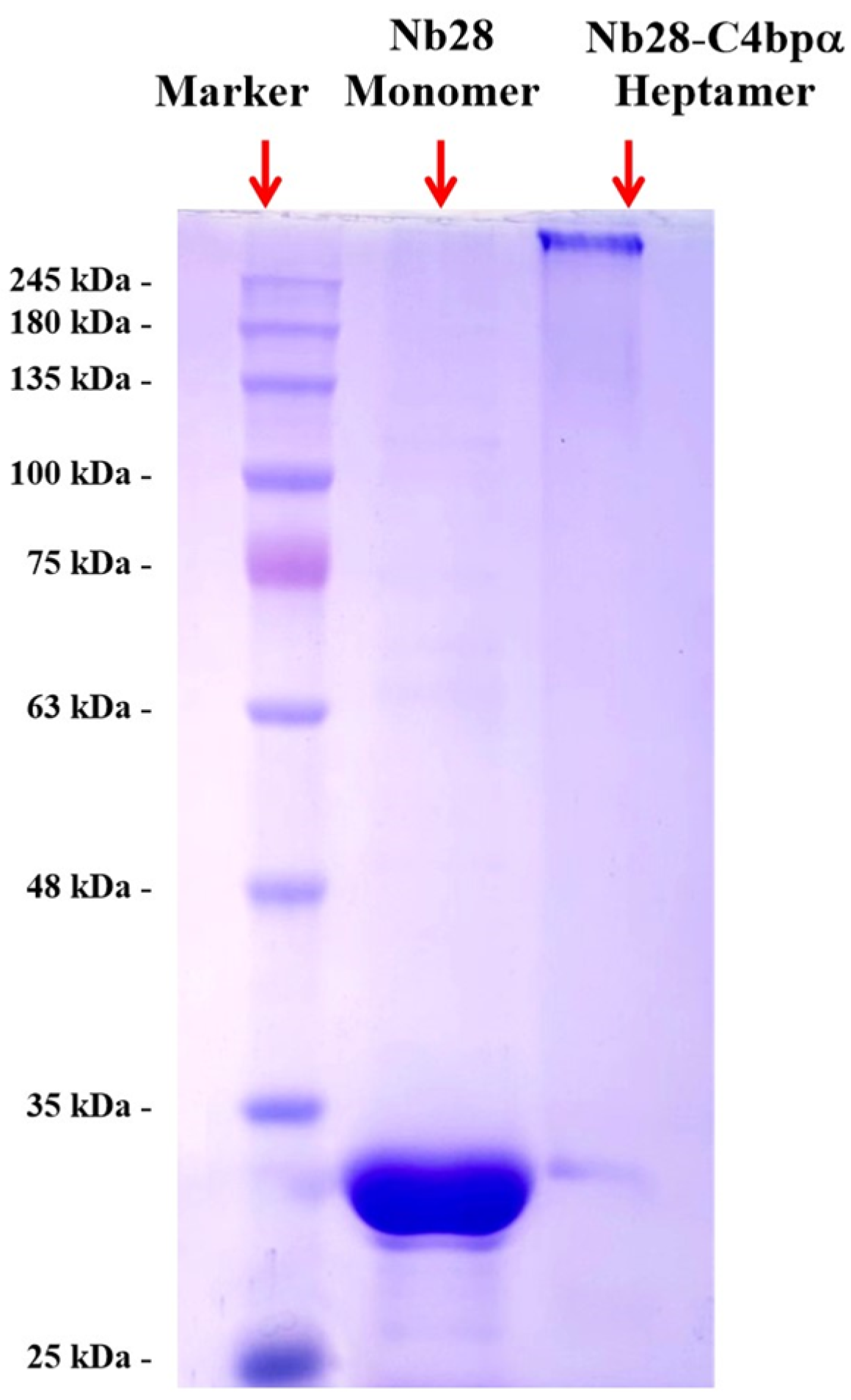
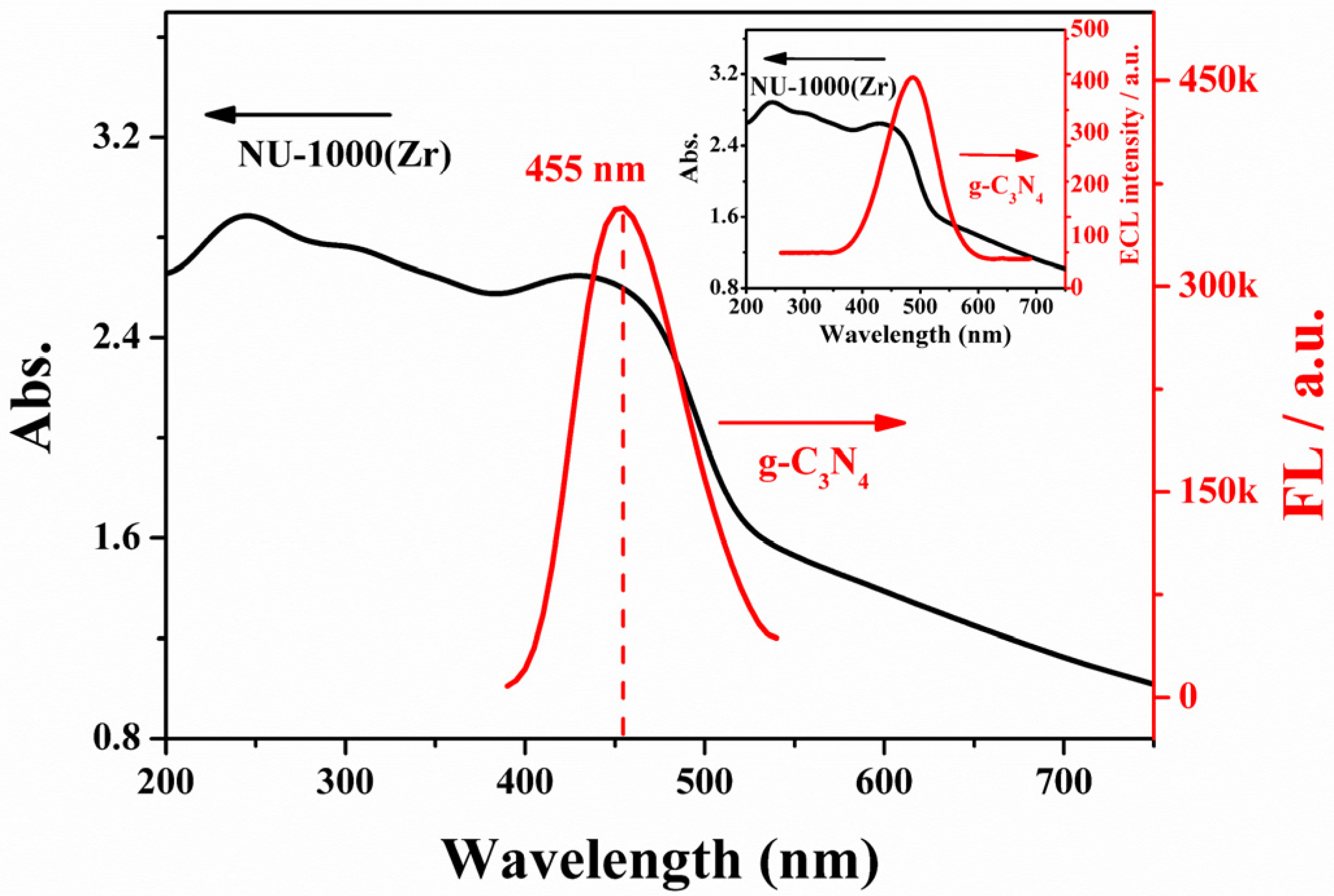
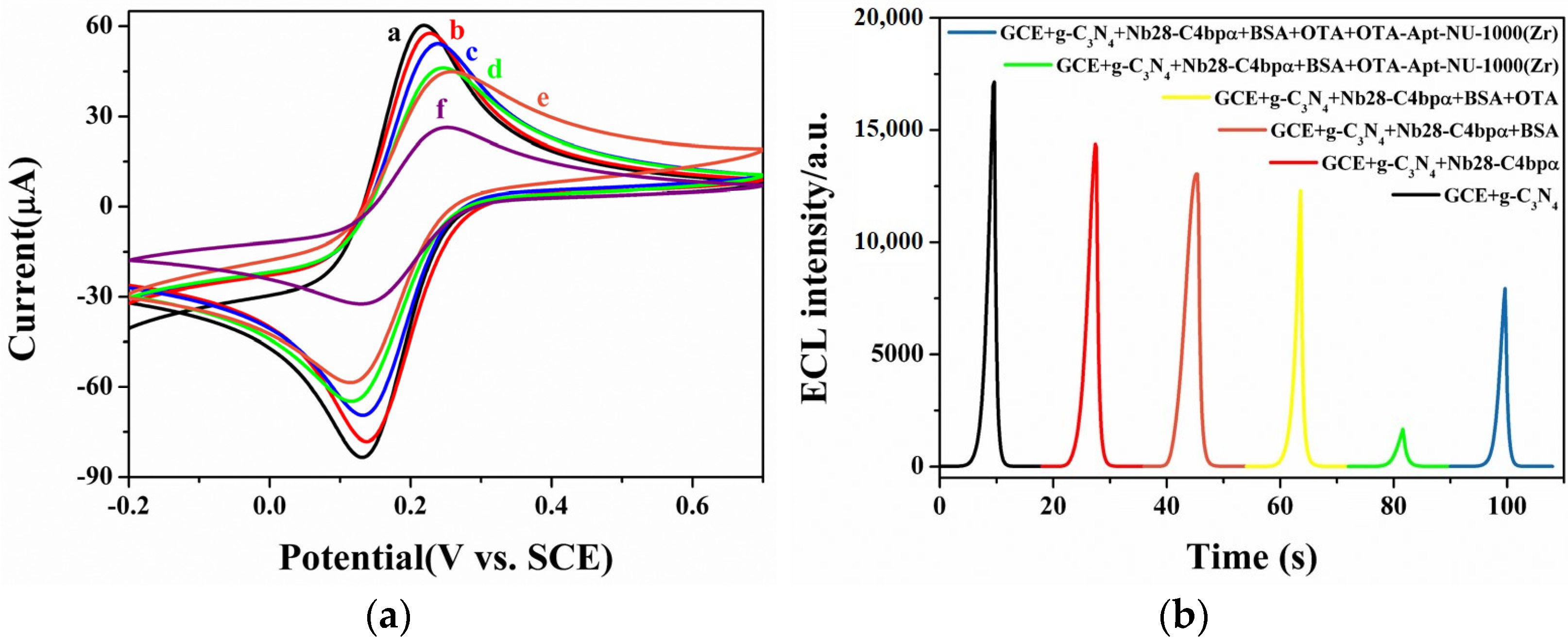

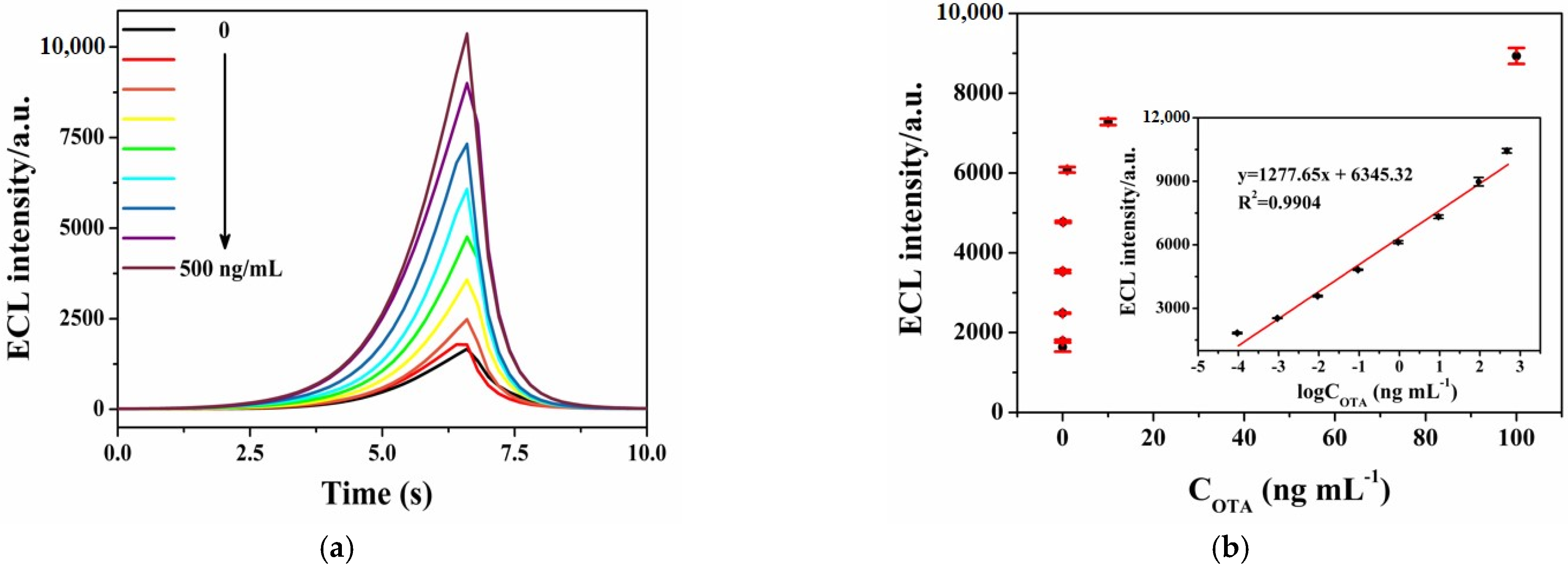
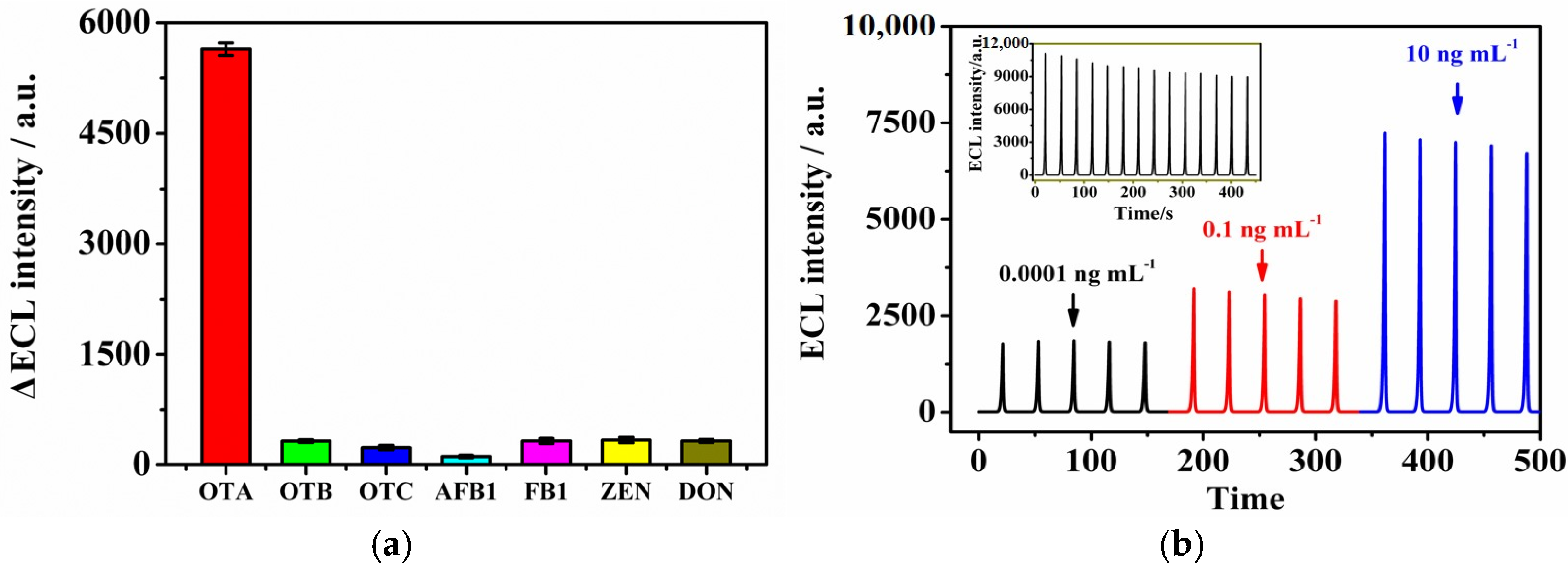
| Type of the Electrode | Linear Range | Detection Limit | Ref |
|---|---|---|---|
| OTA/Apt/GLU 1/CHI 2/QDs 3/Au | 1–100 ng/mL | 0.89 ng/mL | [38] |
| OTA/BSA/Nb28/Ru(bpy)32+/Au/CaCO3/Nafion/GCE | 0.01–100 ng/mL | 5.7 pg/mL | [7] |
| SA-HRP 4/H1 5 + H2/OTA/Apt/DTA 6/AuNPs/BPE 7 | 0.01–100 ng/mL | 3 pg/mL | [39] |
| Cy5-pDNA 8/BSA/cDNA/CS/CdTe/GCE | 0.0005–50 ng/mL | 0.17 pg/mL | [20] |
| OTA, Nb.BbvCI/MCH 9/DNA/CdS 10/GCE | 0.05–5 nM | 0.012 nM | [19] |
| HP1 11 + HP2/OTA/MCH/sDNA/MB-rp 12/Apt/GE | 12.4 pM–6.19 nM | 5.6 pM | [40] |
| OTA-Apt-NU-1000(Zr)/OTA/BSA/Nb28-C4bpα heptamer/g-CN/GCE | 0.1 pg/mL–500 ng/mL | 33 fg/mL | This work |
| Added (ng/mL) | Detected (ng/mL) | Average (ng/mL) | Recovery (%) | Average (%) | RSD (%) |
|---|---|---|---|---|---|
| 0.001 | 0.001 | 0.001 | 101.568 | 97.486 | 3.636 |
| 0.001 | 95.187 | ||||
| 0.001 | 95.703 | ||||
| 1 | 0.980 | 1.006 | 97.981 | 100.603 | 4.214 |
| 1.055 | 105.495 | ||||
| 0.983 | 98.334 | ||||
| 100 | 97.575 | 95.784 | 97.575 | 95.784 | 1.735 |
| 95.488 | 95.488 | ||||
| 94.291 | 94.291 |
Disclaimer/Publisher’s Note: The statements, opinions and data contained in all publications are solely those of the individual author(s) and contributor(s) and not of MDPI and/or the editor(s). MDPI and/or the editor(s) disclaim responsibility for any injury to people or property resulting from any ideas, methods, instructions or products referred to in the content. |
© 2023 by the authors. Licensee MDPI, Basel, Switzerland. This article is an open access article distributed under the terms and conditions of the Creative Commons Attribution (CC BY) license (https://creativecommons.org/licenses/by/4.0/).
Share and Cite
Li, L.; Wang, X.; Chen, J.; Huang, T.; Cao, H.; Liu, X. A Novel Electrochemiluminescence Immunosensor Based on Resonance Energy Transfer between g-CN and NU-1000(Zr) for Ultrasensitive Detection of Ochratoxin A in Coffee. Foods 2023, 12, 707. https://doi.org/10.3390/foods12040707
Li L, Wang X, Chen J, Huang T, Cao H, Liu X. A Novel Electrochemiluminescence Immunosensor Based on Resonance Energy Transfer between g-CN and NU-1000(Zr) for Ultrasensitive Detection of Ochratoxin A in Coffee. Foods. 2023; 12(4):707. https://doi.org/10.3390/foods12040707
Chicago/Turabian StyleLi, Linzhi, Xiaofeng Wang, Jian Chen, Tianzeng Huang, Hongmei Cao, and Xing Liu. 2023. "A Novel Electrochemiluminescence Immunosensor Based on Resonance Energy Transfer between g-CN and NU-1000(Zr) for Ultrasensitive Detection of Ochratoxin A in Coffee" Foods 12, no. 4: 707. https://doi.org/10.3390/foods12040707
APA StyleLi, L., Wang, X., Chen, J., Huang, T., Cao, H., & Liu, X. (2023). A Novel Electrochemiluminescence Immunosensor Based on Resonance Energy Transfer between g-CN and NU-1000(Zr) for Ultrasensitive Detection of Ochratoxin A in Coffee. Foods, 12(4), 707. https://doi.org/10.3390/foods12040707






